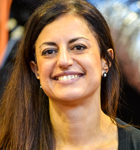| Mr Olivier Colmard VP, Integrated CAE & PLM, Renault « Connected and autonomous vehicles, a major challenge for the Automotive industry » |
 | Dr Hans-Peter Schöner The purpose of driving simulation has developed over the years, and this is continuing and accelerating with the rise of autonomous vehicle development. Technical key topics have changed in the past, and also relevant questions for the application of simulator experiments have changed over time. In the near future the scope of driving simulation topics will extend into some new directions and thus generate new requirements. This presentation discusses the needs for and technical challenges of simulation tools which deduct from these requirements; notably these are: |
 | Pr James H. Oliver Are things really different this time? Many of us remember the last time virtual and augmented reality experienced a “hype-cycle” in the 1990’s, which left many disappointed by the unmet potential of VR/AR. But the past five years has seen an explosion of investment in, and popular excitement about these technologies. Are we entering the VR/AR renaissance? or just another hype-cycle? This talk will summarize the current state-of-the-art in VR/AR. In particular, I will describe some of the fundamental technical barriers that are being (or are about to be) breached that will enable many new applications and innovative uses of these technologies. |
 | Pr Natasha Merat This talk will provide an overview of the use of a variety of human-in-the-loop simulators at Leeds to address human factors and user behaviour questions relevant to technology development for roads and vehicles, focusing recent research on the human factors challenges and opportunities of automated vehicles. The importance of driving simulation in this this type of research will be discussed, outlining some of the key benefits – and perils – of working with simulators. |
 | Dr George Drettakis In this talk we will present the general principles of Image-Based Rendering (IBR), and then discuss a sequence of algorithms developed in our group to improve the quality and speed of IBR. We show how we use structure from motion and multi-view stereo from a set of images of a scene to enable photorealistic free-viewpoint navigation, based on the creation of per-view data structures such as superpixels or per-view meshes and more recently using deep learning methods. We conclude with a discussion of potential applications to driving simulation. |
 | Pr Jelte Bos People without functioning organs of balance do not suffer from motion sickness, irrespective whether the motion is physical or visual. Blind people do suffer from motion sickness. Our organs of balance are therefore key to any kind of motion sickness, while vision, although at issue, is only of secondary importance. Understanding these issues is, in turn, not only key to optimising motion cueing in simulators, but to optimising ride comfort in automated vehicles as well. Stuffed with visual infotainment, the latter comes close to the former in a visual-vestibular sense. |
 | Dr Mike Blommer Ford Motor Company uses driving simulation technology to develop automated driving features. The types of driving simulators used for feature development will be presented, with a focus on VIRTTEX, Ford’s large motion-based driving simulator. An overview of the types of studies conducted in VIRTTEX will be presented, along with different simulation techniques to study important issues related to driver performance. |
